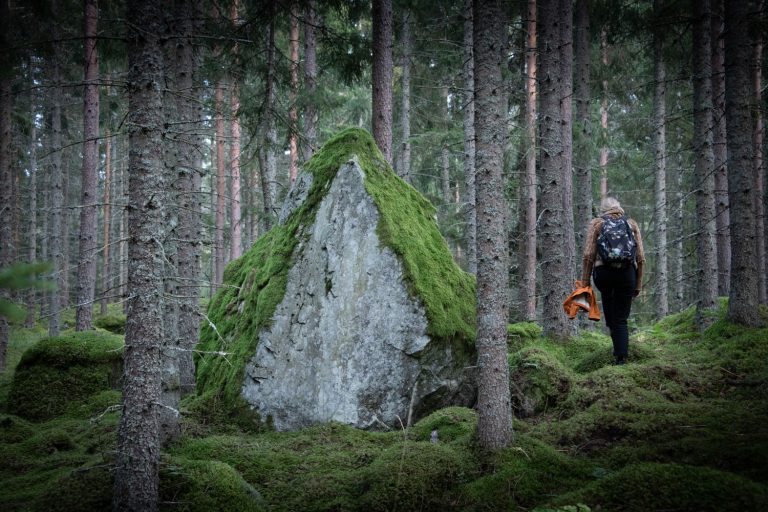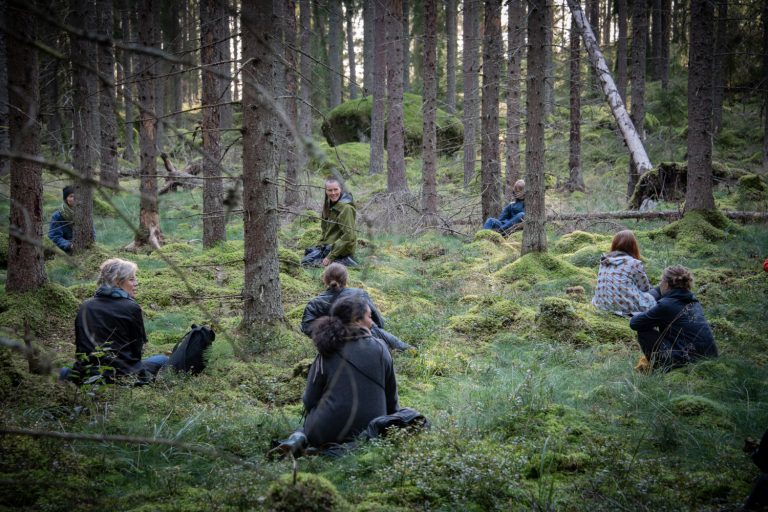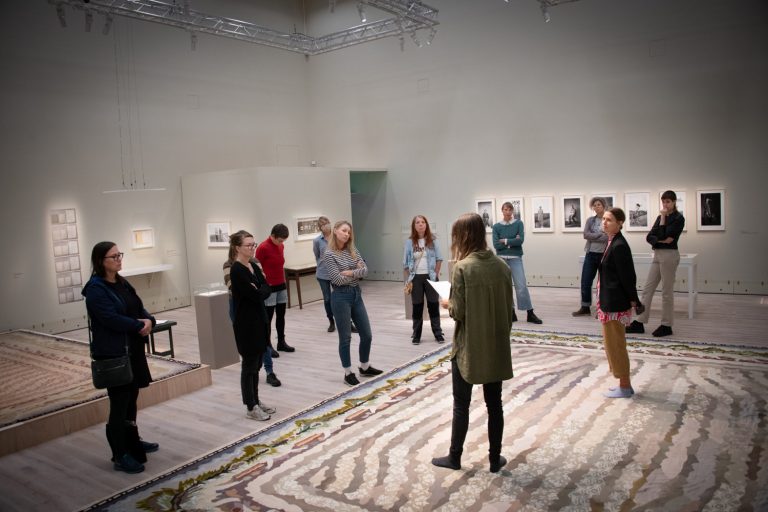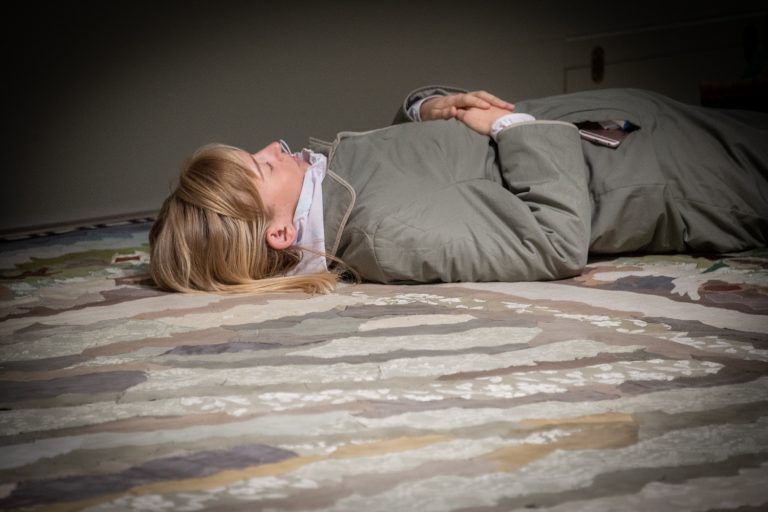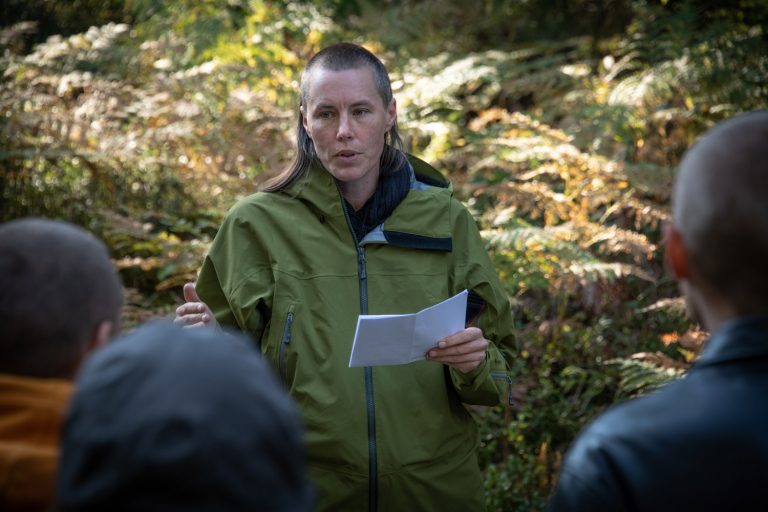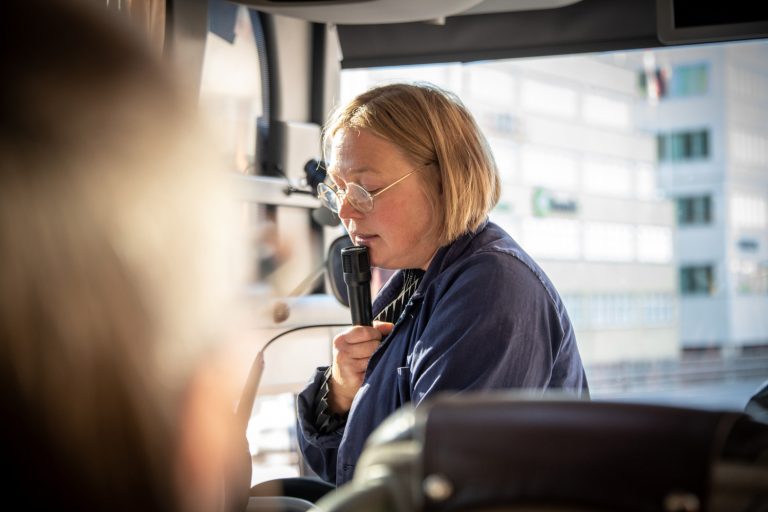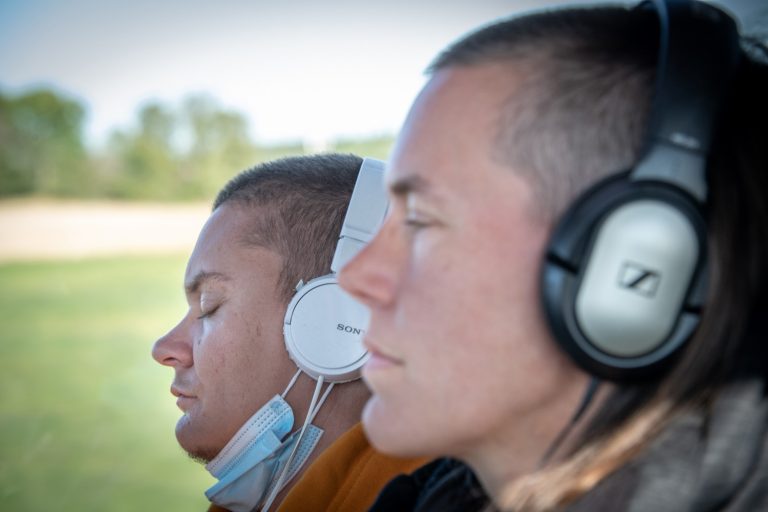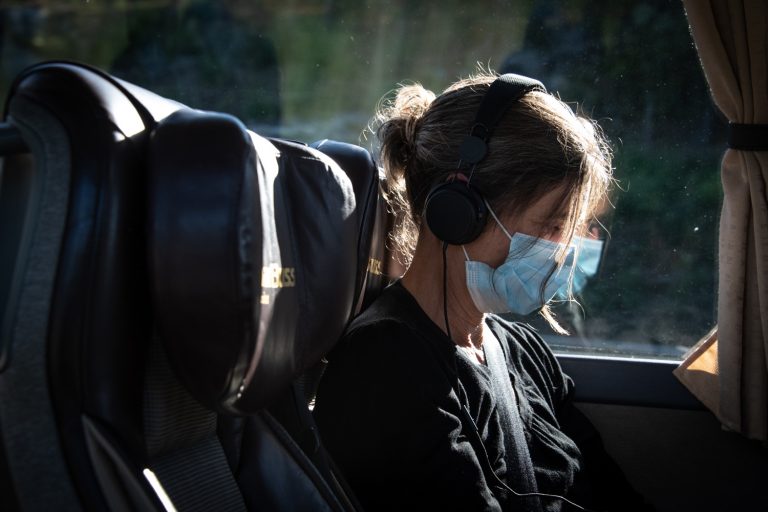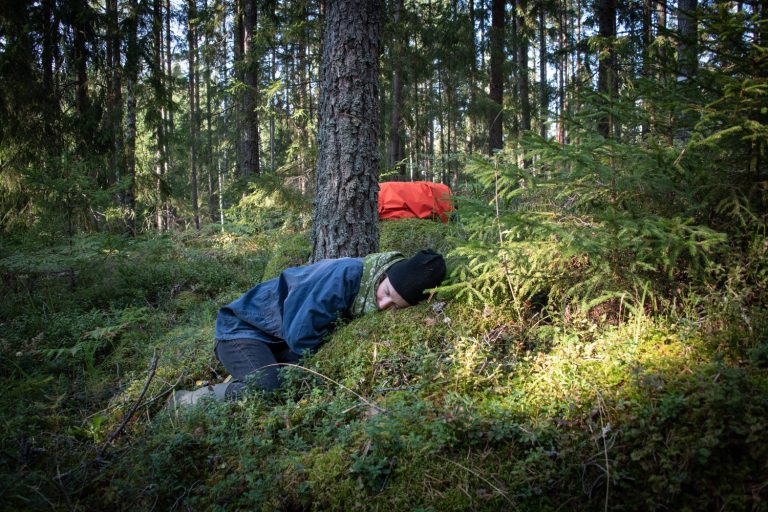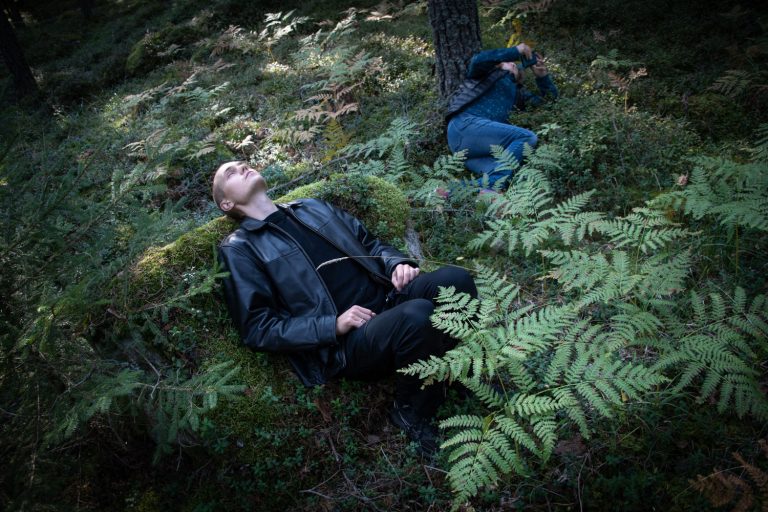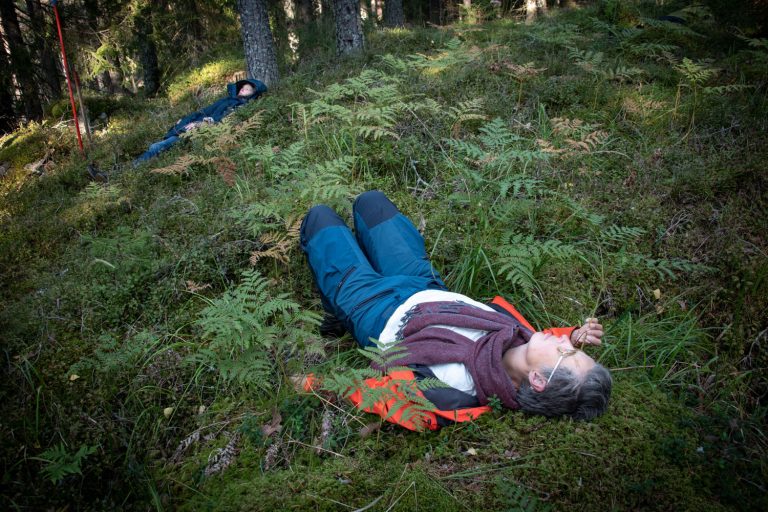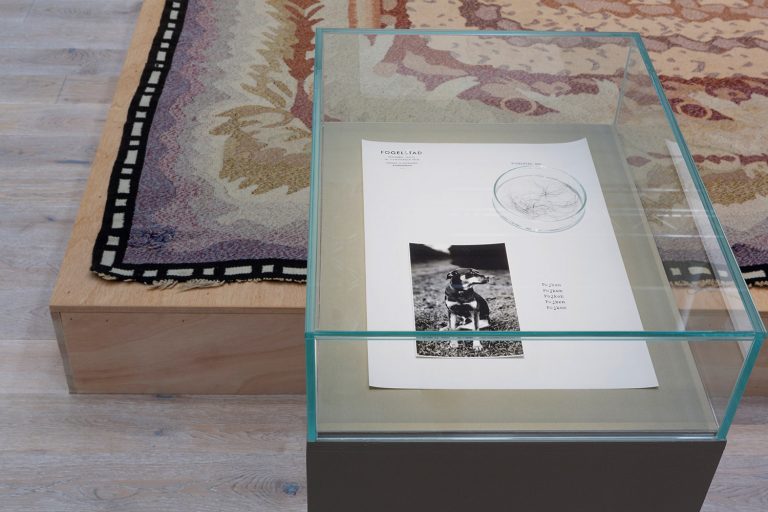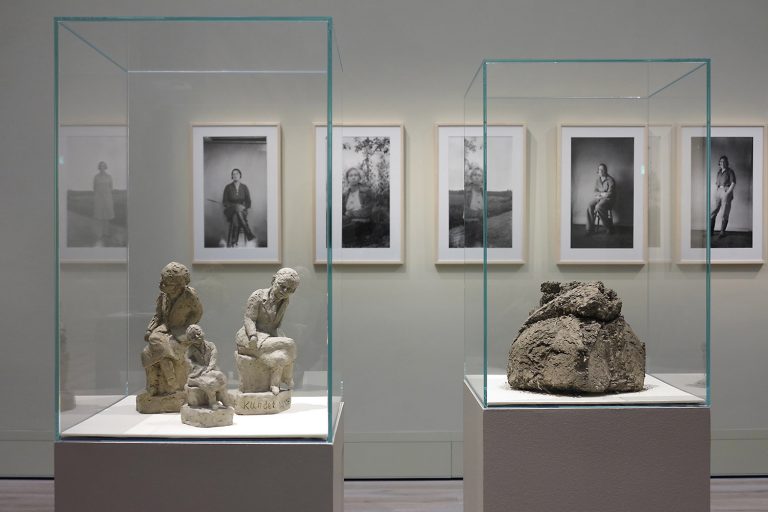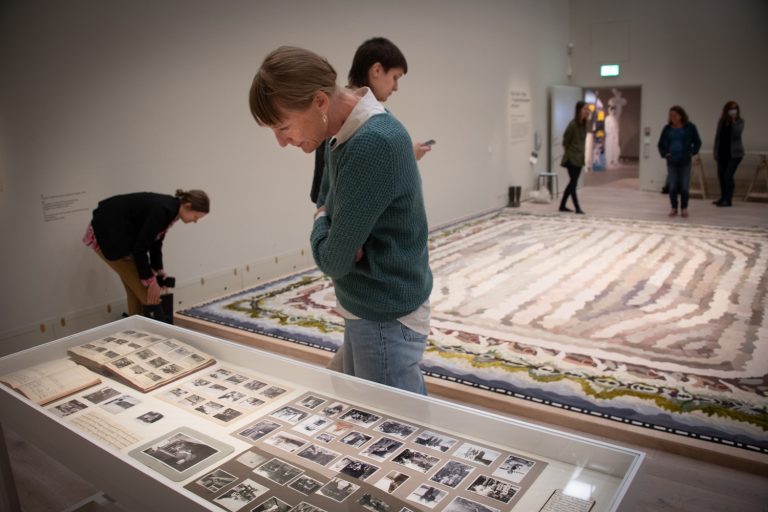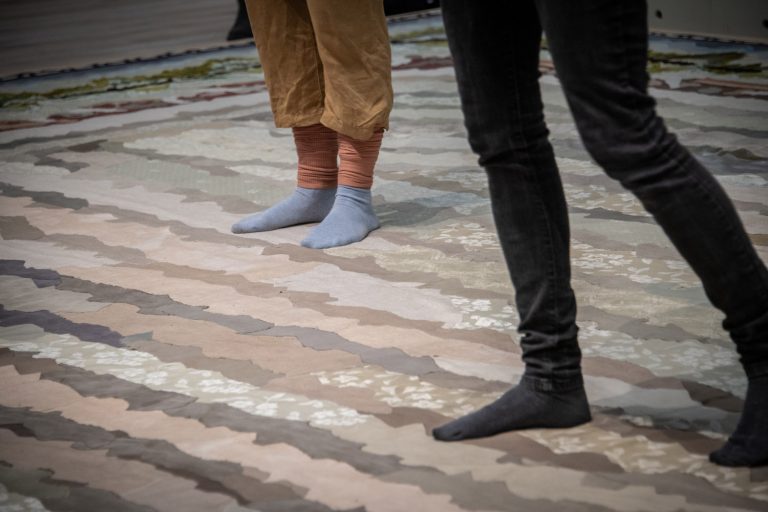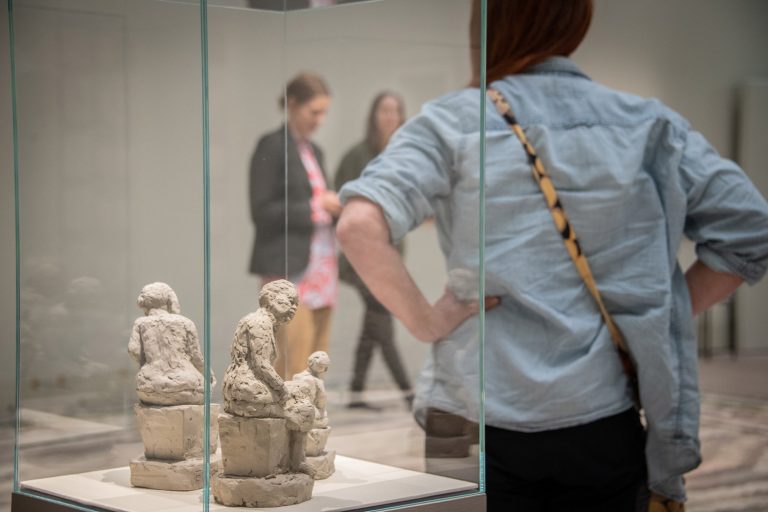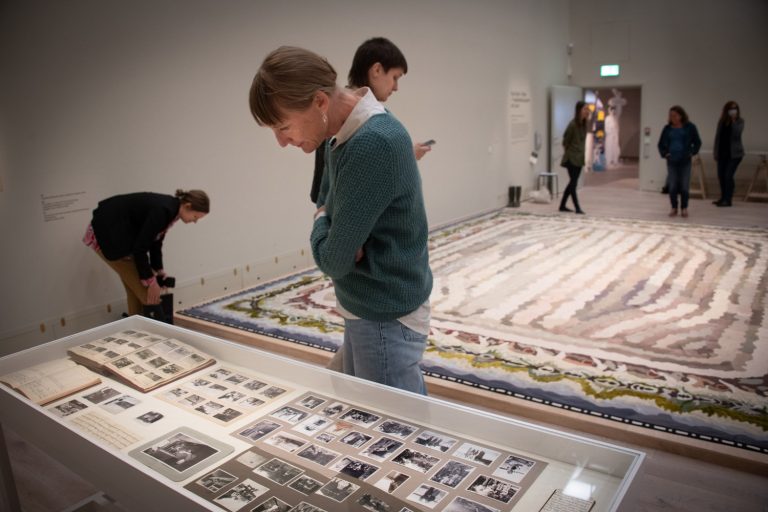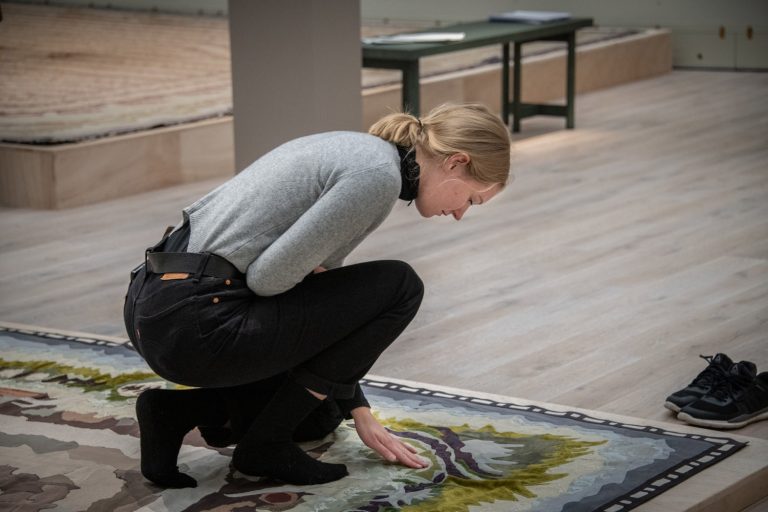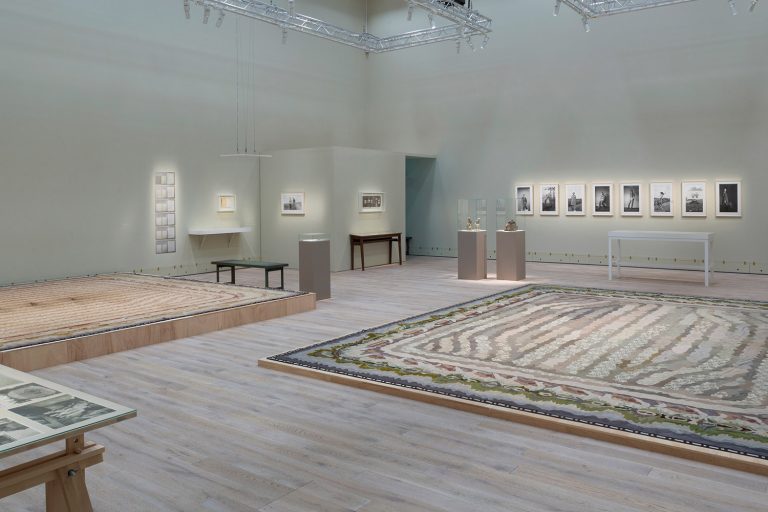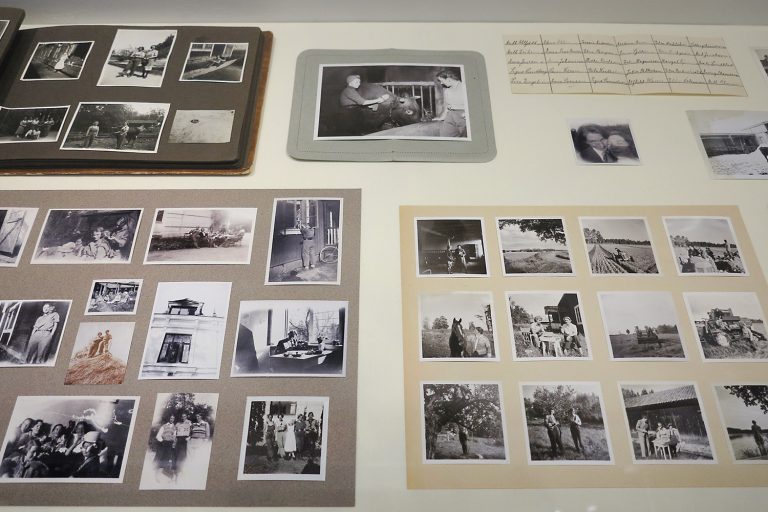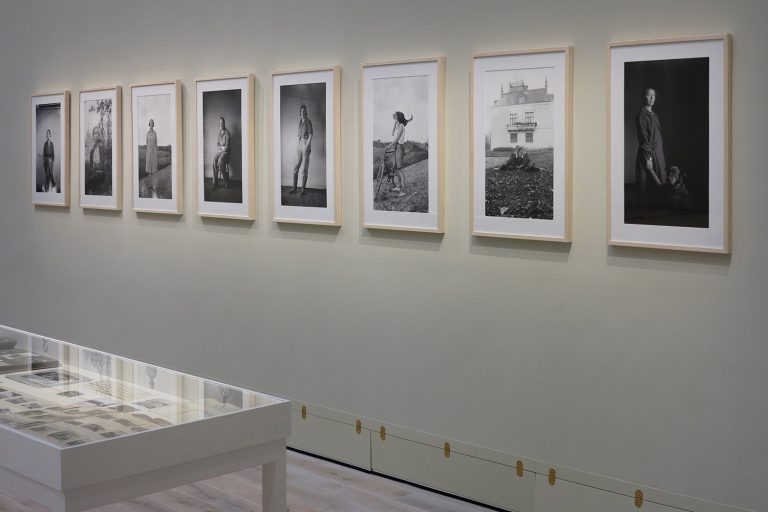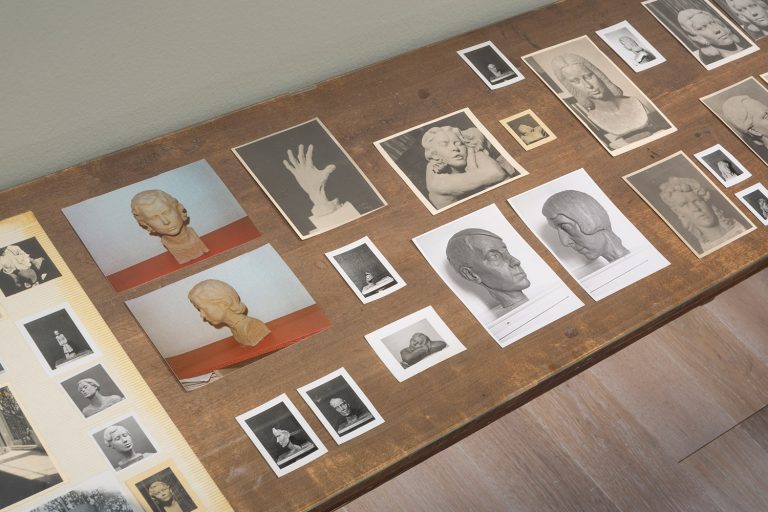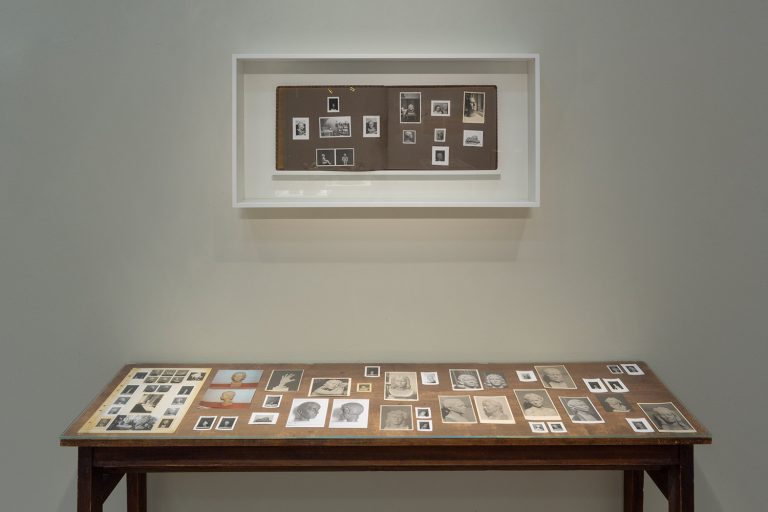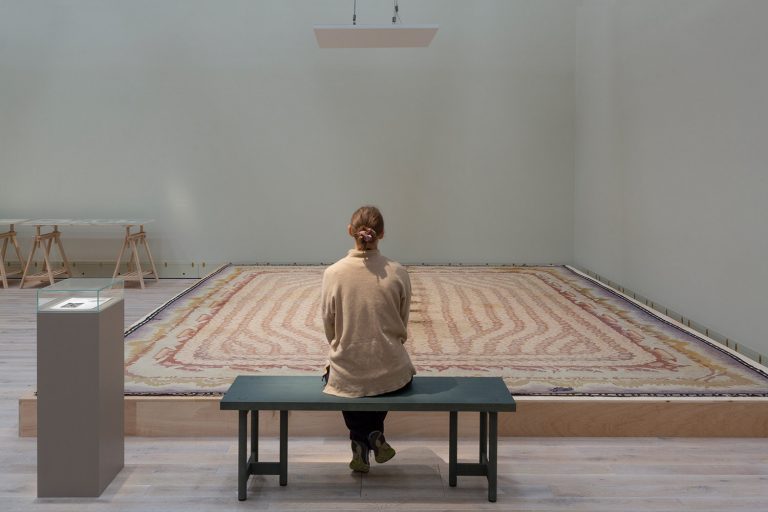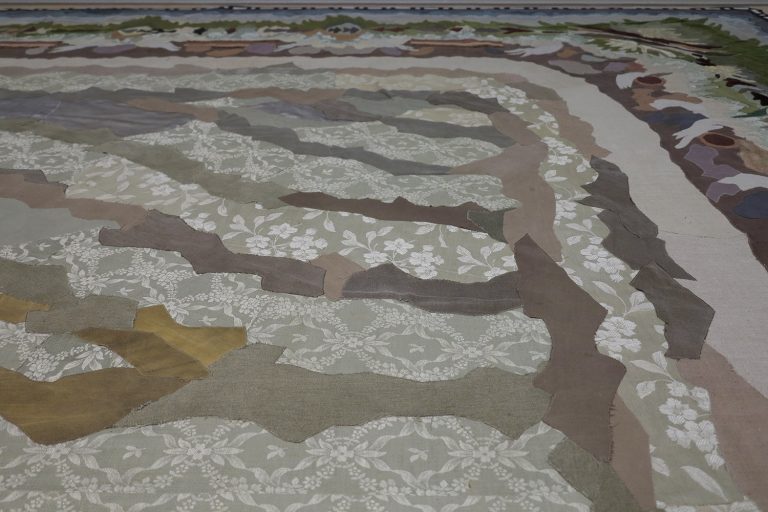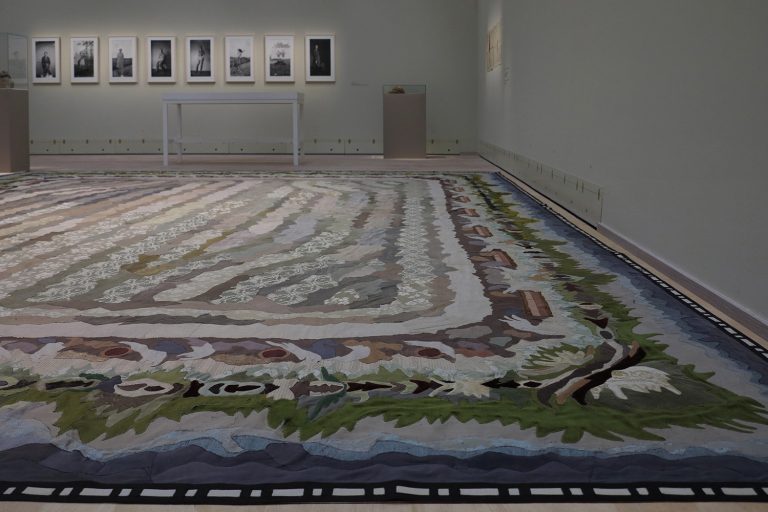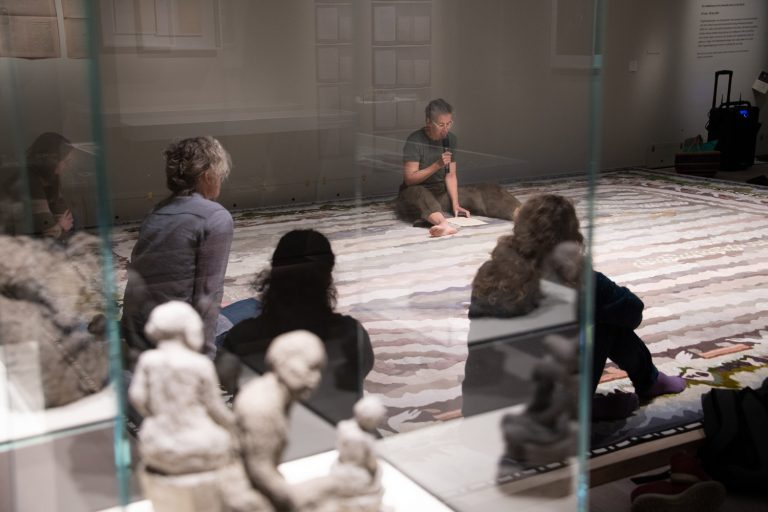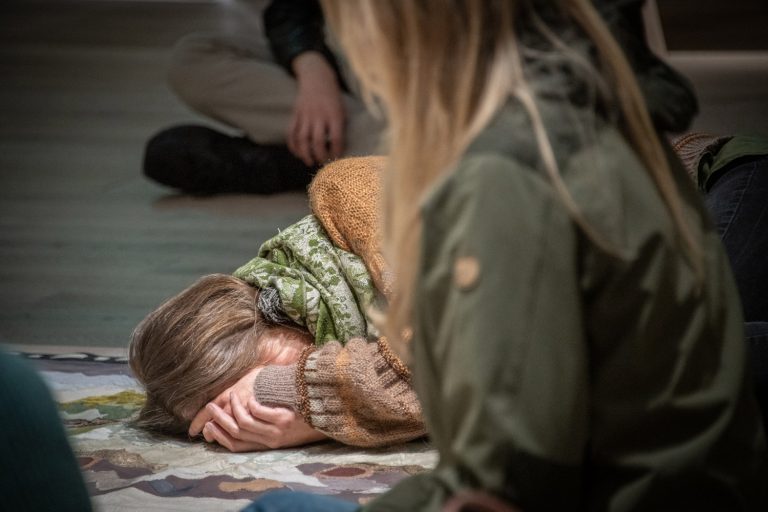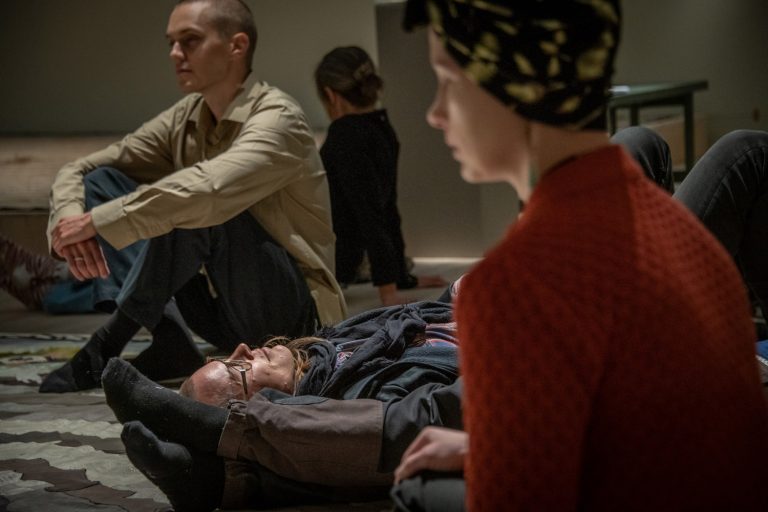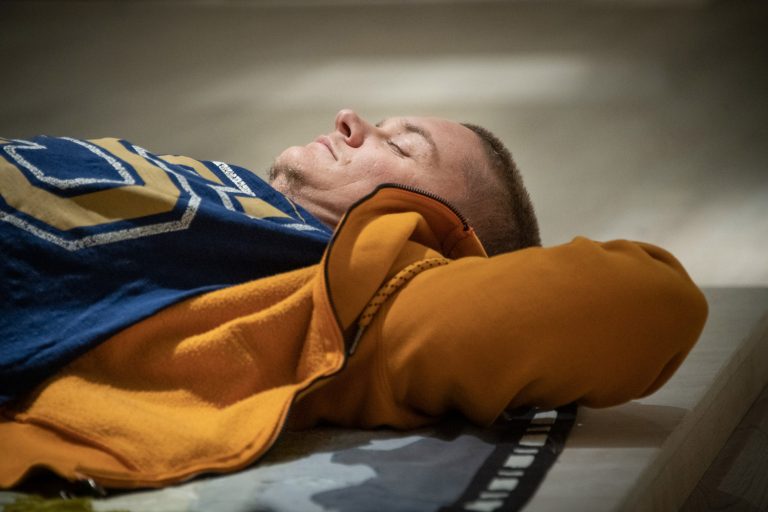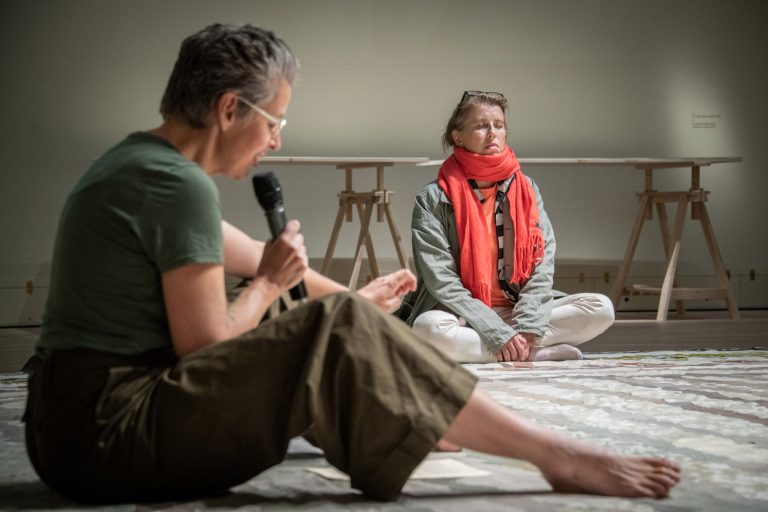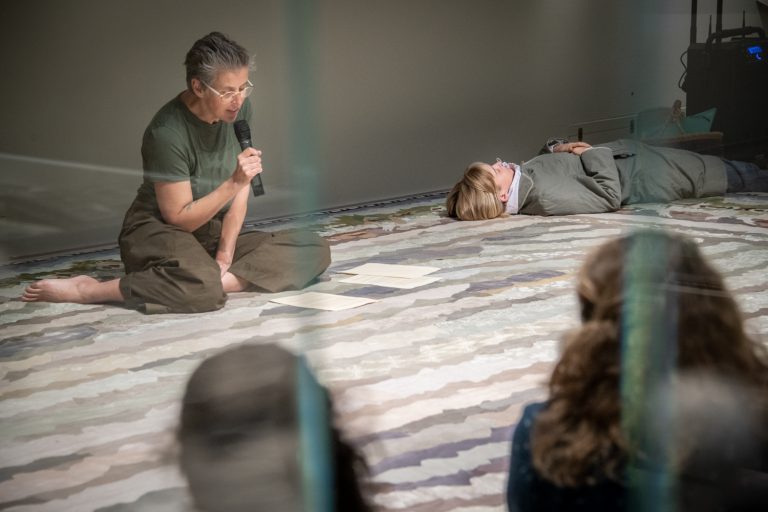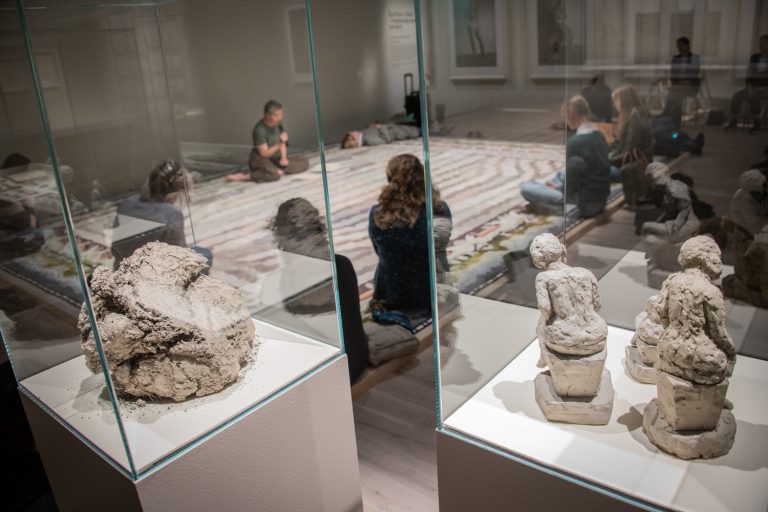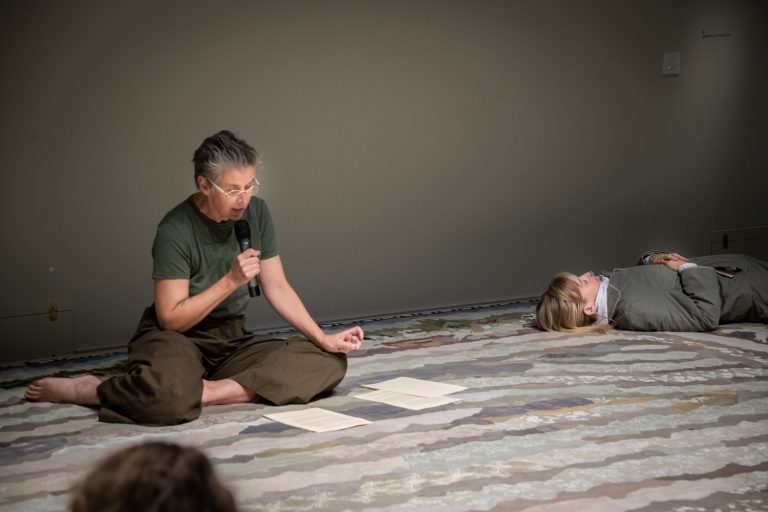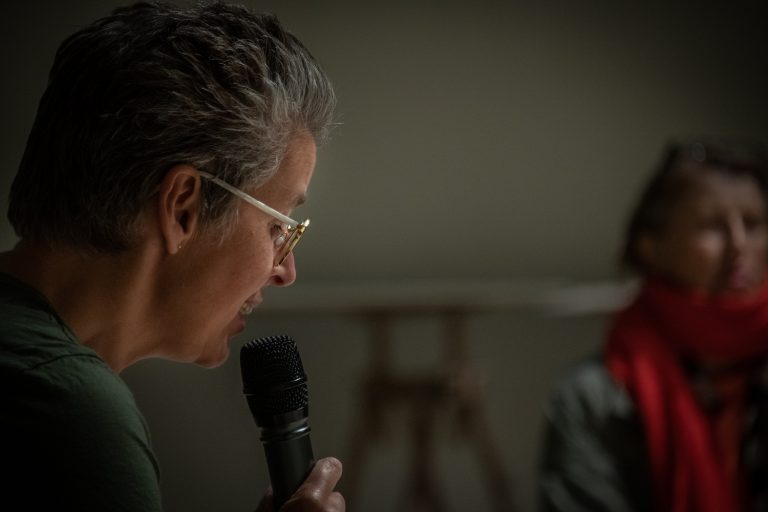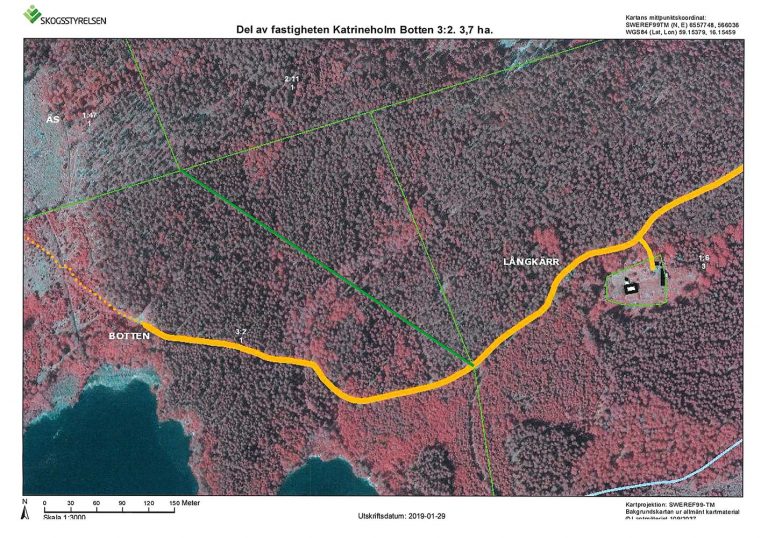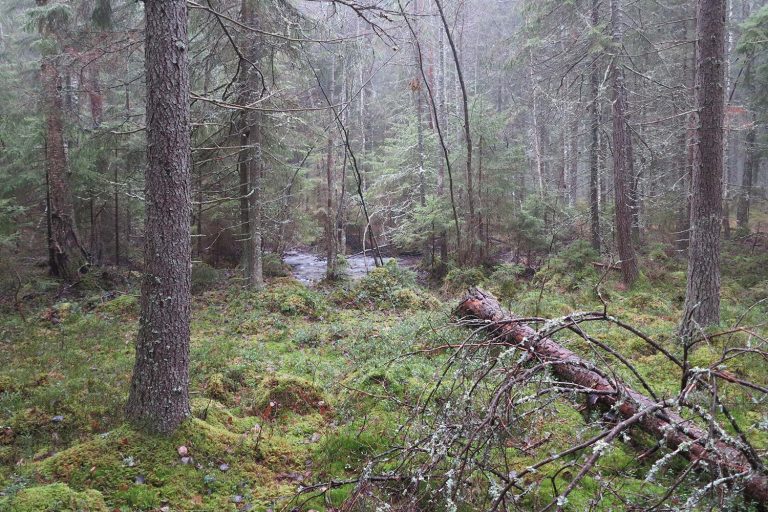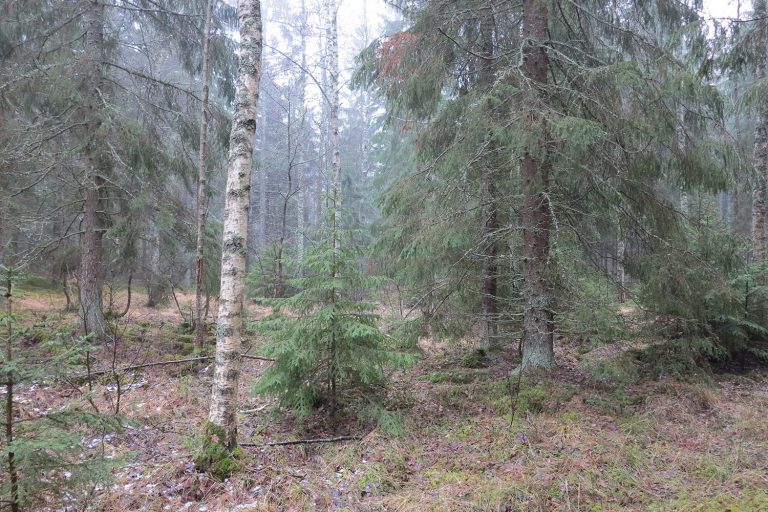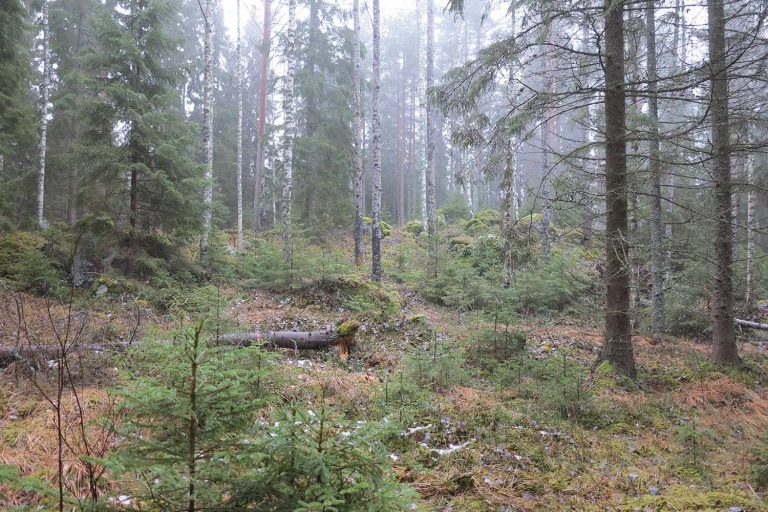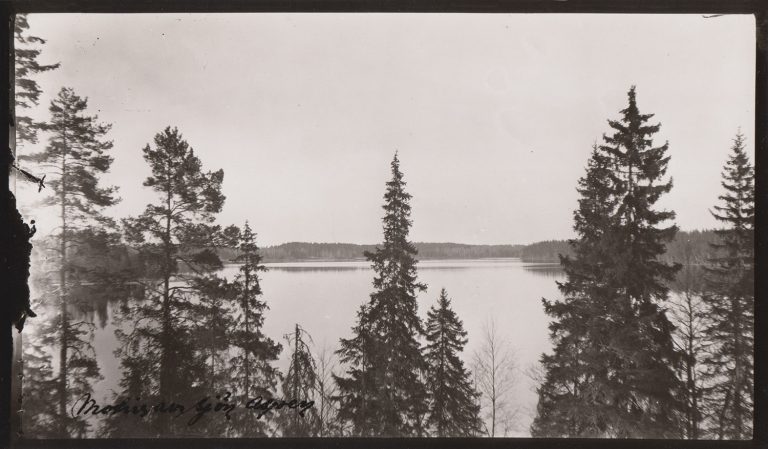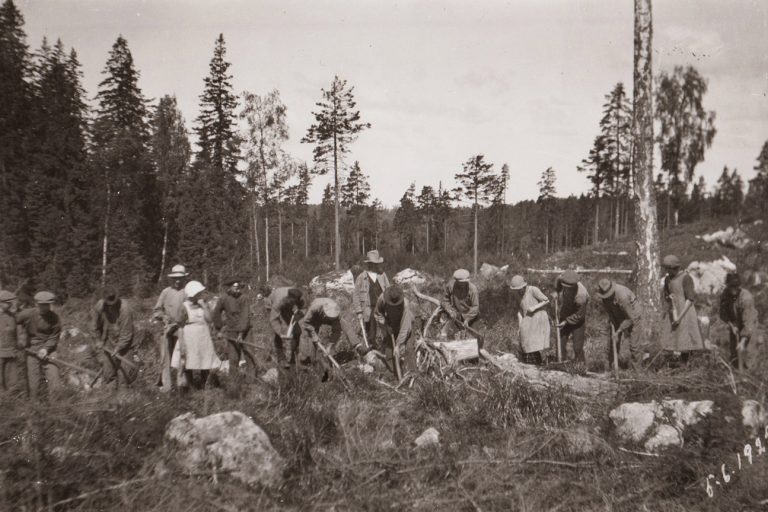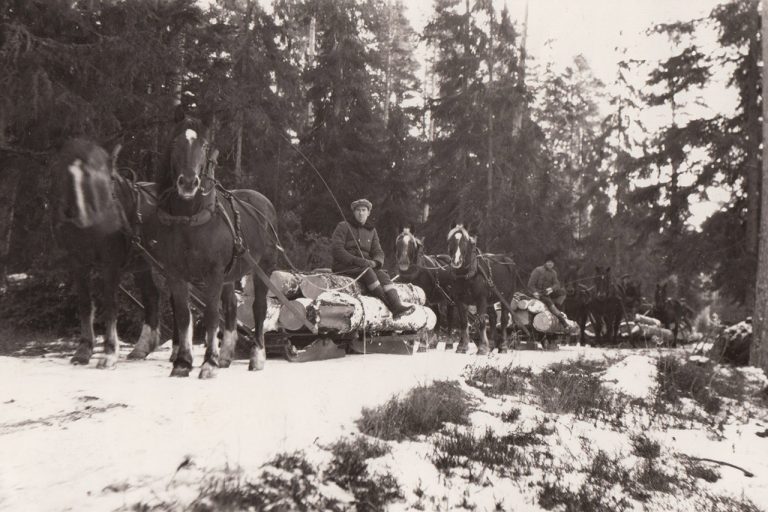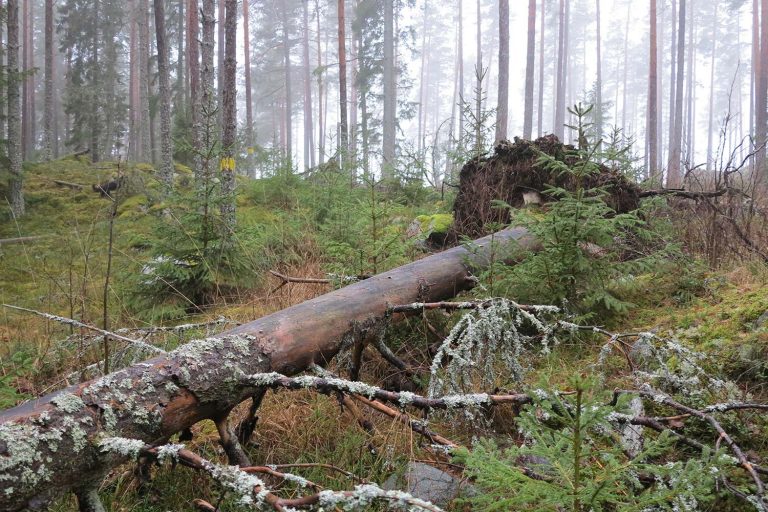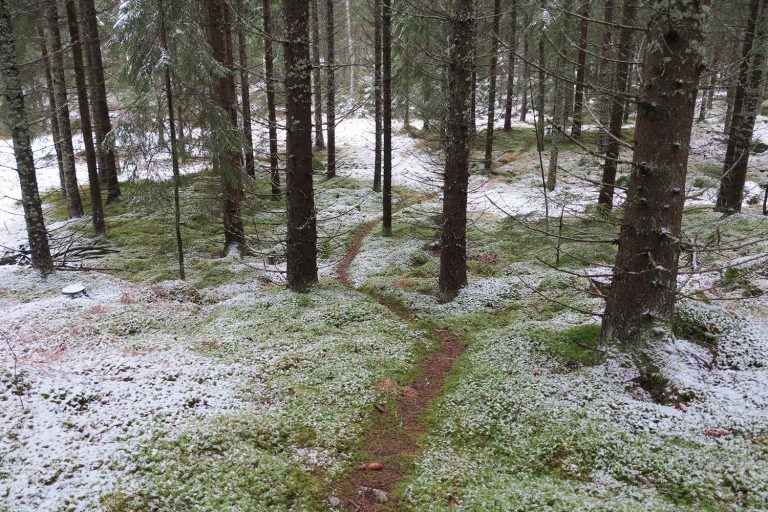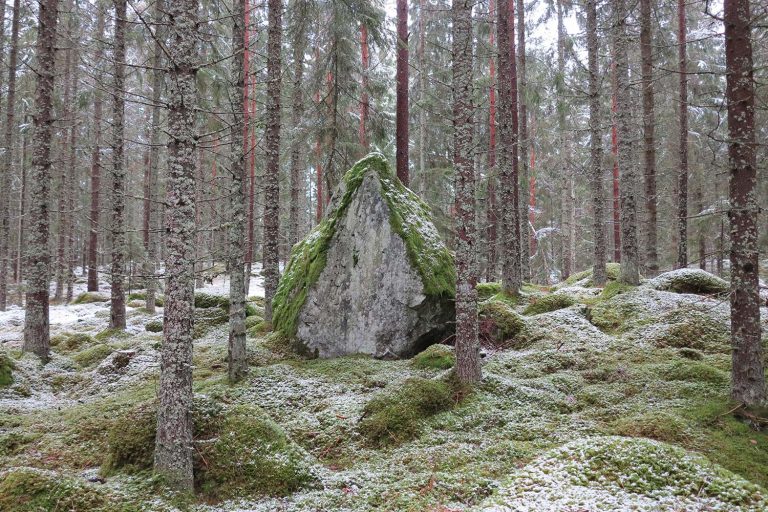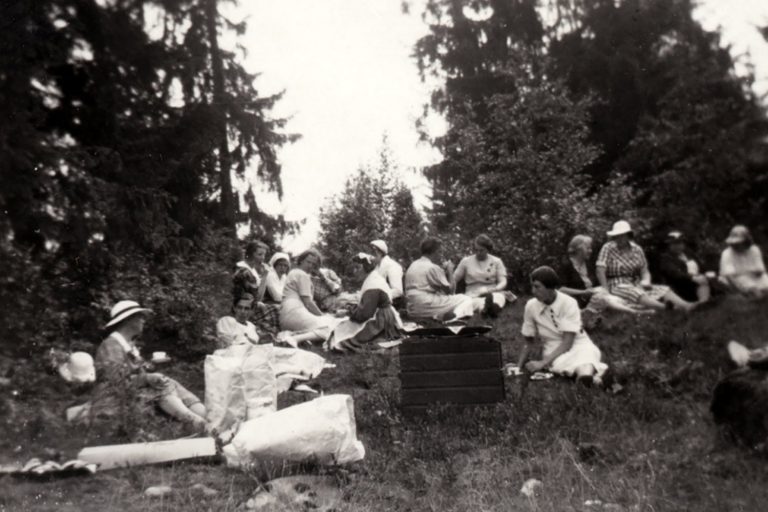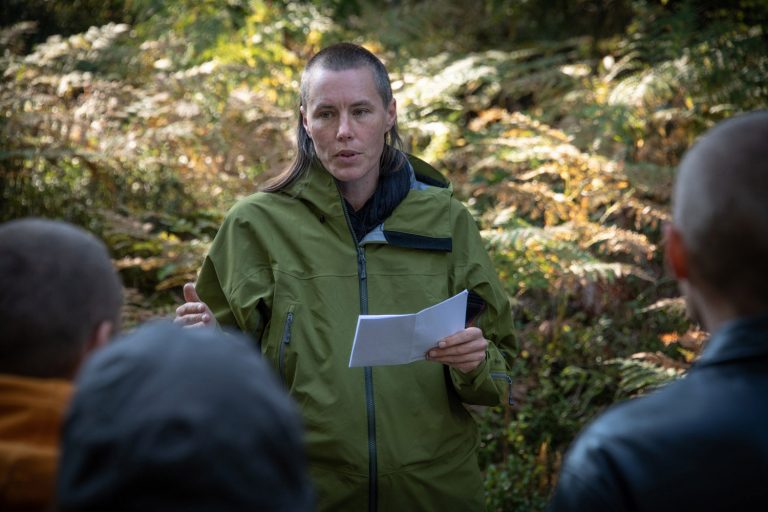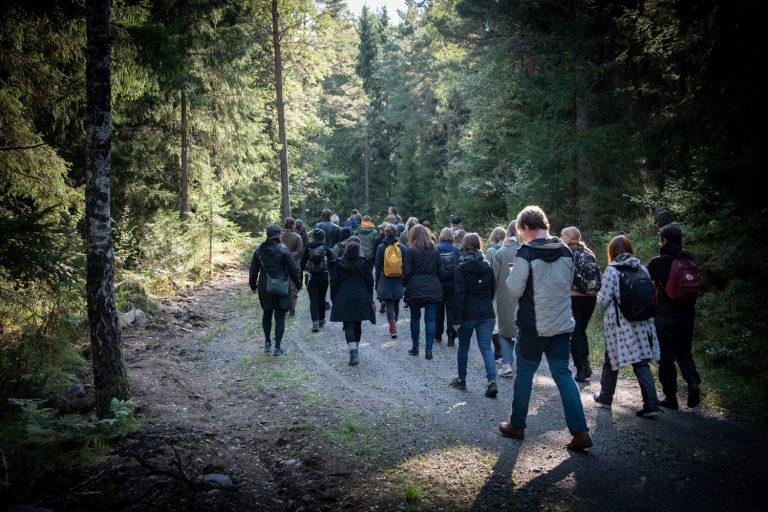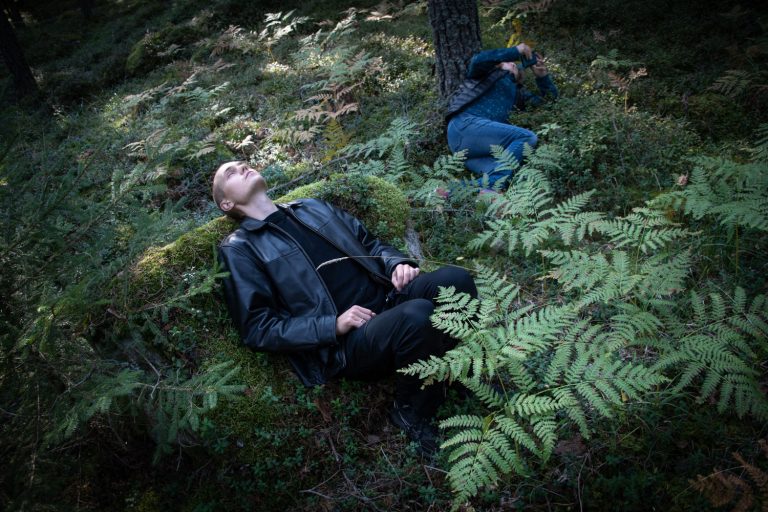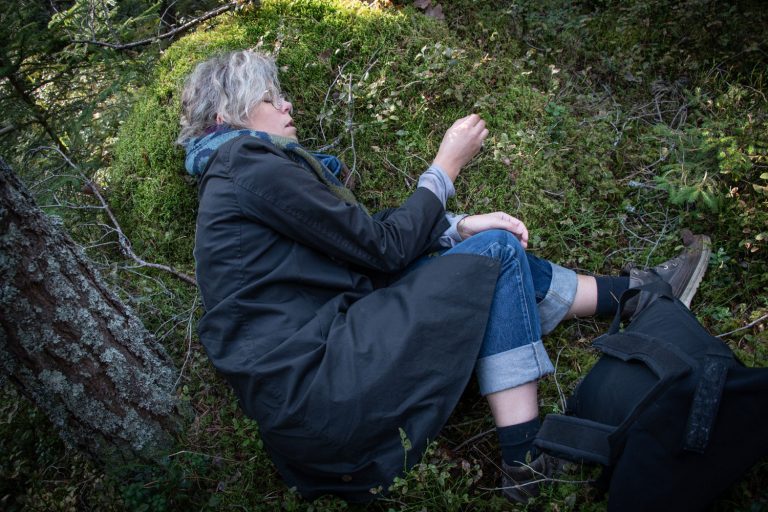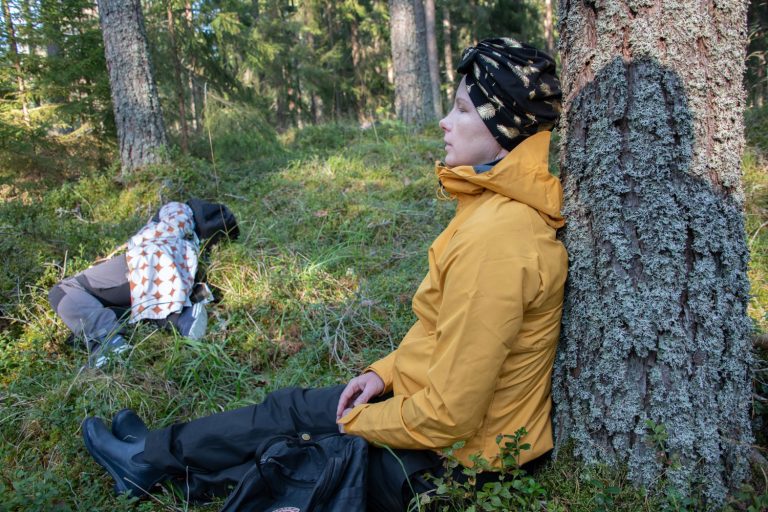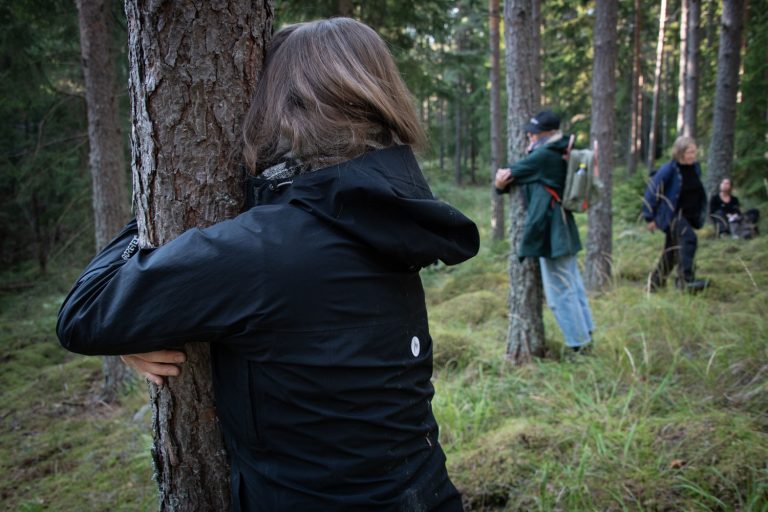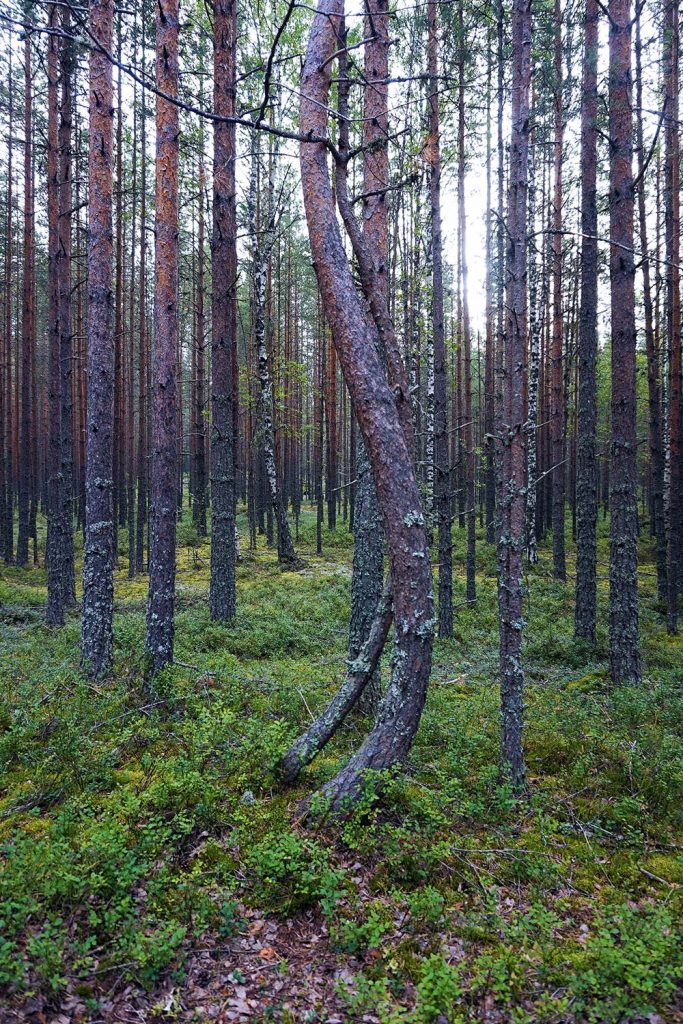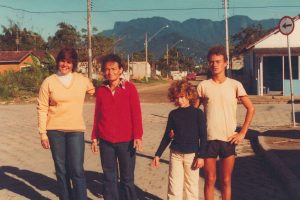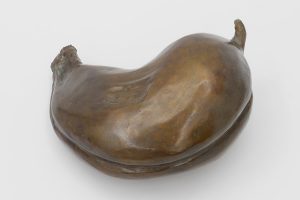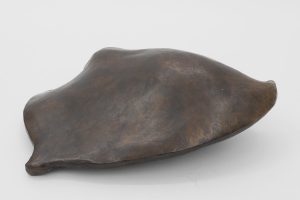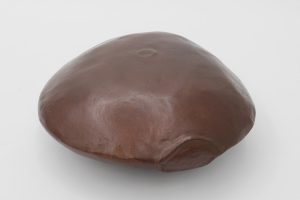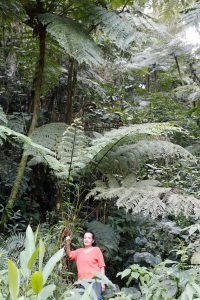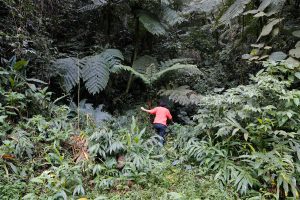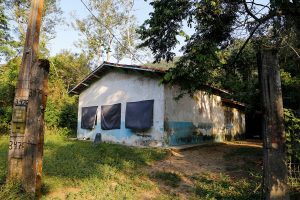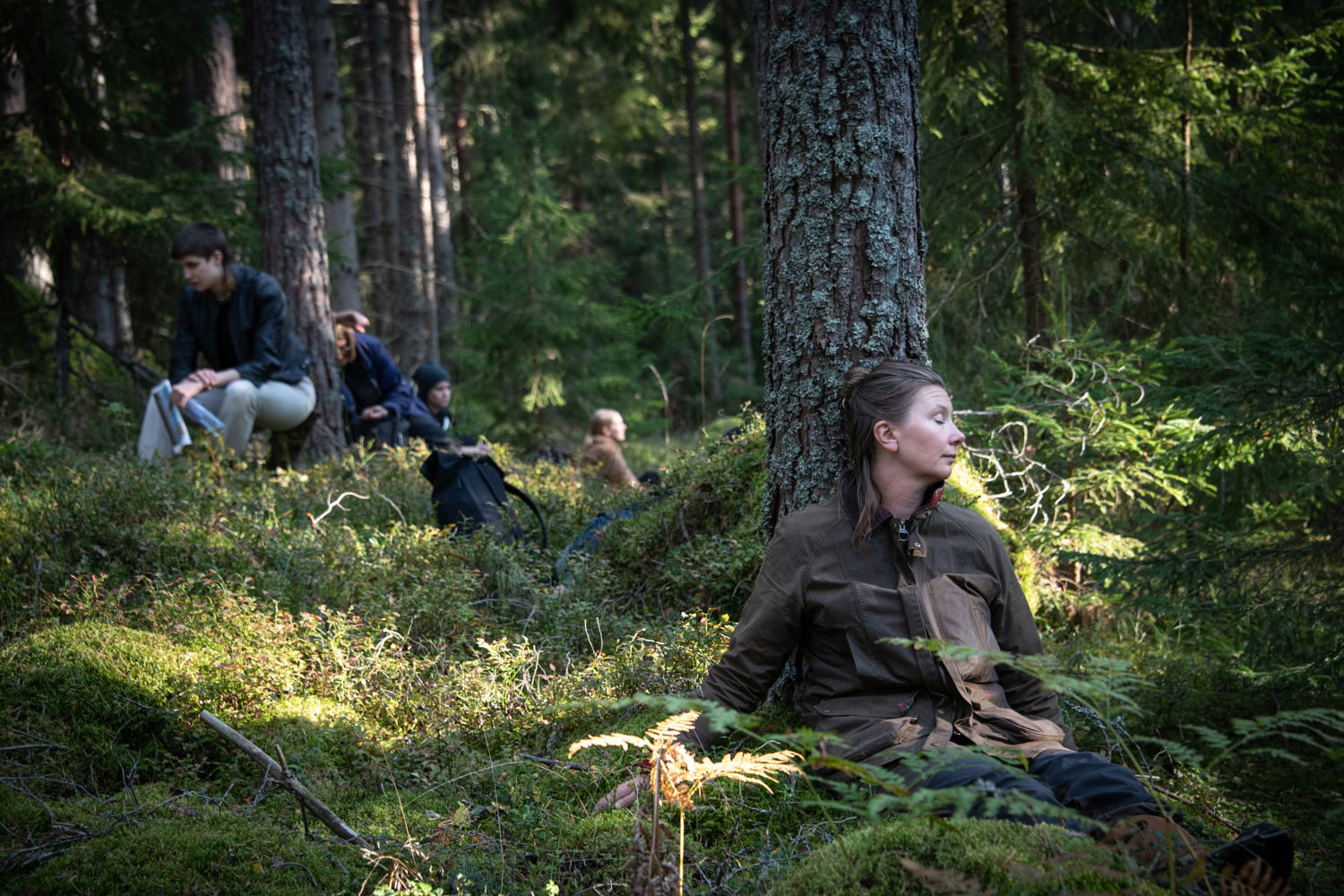My work usually develops out of interactions with the physical and social environments of places I live in or visit for exhibitions or residencies. Out of respect for the important work and history of the Fogelstadgruppe I would have liked to have spent some time in the forest in Fogelstad so that I then could speak. But Covid 19 has changed this.
Therefore, I will speak about the Atlantic Forest in Sao Paulo from where I am from in Brazil. And this will be an interruption in your trip.
I have divided the talk into three sections each titled with a Tupi word from the original peoples, the Tupinamba whose territory this was. It is part of a work of mine, Metaplasmos which are bronzes of fruits and seeds of the Atlantic Forest – it is the beginning of an Abecedaire of Tupi, the language of the Tupinamba and which is no longer spoken in Ubatuba but which had defined a way to think and see the world precisely there and no where else.
Coigbâcete recou: is a Tupi word which means: Strength, as we say, comes from the forest.
The Atlantic Forest runs along the coast of Brazil but also goes inland covering a total of 16 states and meandering to Argentina and Paraguay. 34,000 hectares of the forest continues to be destroyed each year. Only 11 percent of the original vegetation remains.
I was born in the midst of where it was made to no longer exist – in the city of Sao Paulo. Like many others, my parents had left the country-side to find jobs in the big city. When I visit what I still consider ‘back home’ – the towns of Sao Luiz do Paraitinga and Ubatuba in Sao Paulo, I take a bus from the city to Ubatuba via Sao Luiz. In a bus ride of a few hours the history of colonization of the land is revealed. During the 70s I remember the large expanses along the highway of orange-red earth looking gutted and exposed from the recently cut forest. Much machinery was involved in cutting, packing and reshaping the earth to make new settlements for workers needed in the growing industries, such as the automobile manufacturing facilities, of Sao Paulo. Then after another hour or two, there comes the sad barren hills of the countryside. Earth collapsed by erosion bleeds purple here.
The forest around Sao Luiz do Paraitinga, like many non-indigenous settlements in the area, was cut down first to grow coffee which removes in about seven years all nutrients of the earth. When the earth weakens and coffee can no longer be grown sugarcane is planted. After sugarcane could no longer be grown, the damaged earth can still support forage grasses planted for cattle. The free range cattle trample up and down the hills, pounding the earth down. Compaction of the soil does not allow water to be absorbed by the earth. This results in erosion. It also results in Voçoroca, in Tupi it means rupture of the earth. Water becomes trapped in some layers of the earth and having no where to go due to compacted soil, eventually pops up and collapses.
The cattle which came had seeds on their bodies from an African savanna. These seeds dropped upon the forest-less human-weakened earth and large spikey bushes grew. Cattle that ate the sharp leaves died from internal damage. Ranchers set fire to remove this bush from their land. It is a plant from the savanna where fires are common. To survive it has developed a long root that guarantees it remains alive while fires rage on the earth on top and it has learned to sprout quickly back after a fire. The forest plants cannot compete. These bushes took over the damaged earth and as a result cattle ranching all but ceased in Sao Luiz.
I thought that at that moment the forest could return.
But eucalyptus trees were planted. It now grows in orderly rows throughout the region. It is a tree that has learned to survive droughts in its native Australia by extracting as much water as possible from the earth to the detriment of all other neighbors. In the earth that was pounded down by cattle and where water cannot be easily absorbed, the roots of the eucalyptus tree finds what moisture it can to survive and thus causes further erosion of the earth. I have seen a plantation in Sao Luiz with the earth collapsing around the very roots of these trees. The eucalyptus is grown to make toilet paper.
The forest here does not return.
There is a former ranch now eucalyptus plantation that can easily be seen on the right side of the road. In a small area between the steep slopes of the hills, the remnant of a forest survived for centuries. It was too steep to grow coffee or sugarcane and no cattle could reach it to forage there. But it is perfect for growing eucalyptus trees. But now, it is no longer permitted to cut down the forest. It is such a small plot of native trees on that ranch and yet it remains an affront against the non-indigenous land owner. There is a killing method called The Ring. Eucalyptus trees are planted to encircle a native forest. Eucalyptus trees grow fast. They will eventually choke the native forest trees. In plain sight – a public secret.
Rains still come, but the earth has been made impenetrable to the water after the forest was cut, and the remaining earth pounded down by cattle hooves, torn apart by the ensuing voçorocas and erosion, and then sucked dry by the eucalyptus trees. The torrential water does not stop for the earth sealed against it and instead runs quickly down the hills.
A few years ago it rained very much – as it sometimes does. The water rushed down the hill with no vegetation or trees to stop it. The water rushed down the hill of pounded earth. The water gushed into the river which rose up. This river met with another river which had also risen up. Together they rose higher and higher and the town was flooded. Its historic colonial town center – a monument to slavery – destroyed.
It is famous for its carnival now, which was the government’s solution when the town was going bankrupt after cattle ranching ceased. They said ‘dance the carnival’. ‘To dance in the carnival’ had been prohibited by the catholic church since 1930. We learned to dance the carnival. Hundreds of thousands of tourists now flood the town of a few thousand inhabitants during carnival. Property prices have gone up.
Aimõbucu in Tupi means: To linger in order to postpone as one wishes.
On the bus from Sao Luiz do Paraitinga to Ubatuba which is on the coast, after passing The Ring Death Trap Plantation, and well maintained stately colonial homes which were worked by enslaved labor until 1888, one begins to climb the serra – the mountain. The Serra do Mar State Park halted somewhat the ongoing destruction of the forest in the late 70s. And where the park begins a war continues to rage. The non-indigenous owner of half of the hill refuses to let one tree grow there – it is an offense to him. On the other half, the state park begins and so does the forest.
For many years I would hold my breath going up afraid to find that destruction would continue. But for the last decade, I allowed myself to breathe thinking that a moratorium had been reached. But two years ago, the road was littered by uprooted vegetation and neatly cut wood piled on the side of the road. A new road was being cut into the mountain to allow access to yet more tourists.
The invasion from Europe came directly to Ubatuba resulting in the genocide of the original peoples, the Tupinambas, those who survived either were pushed further up the coast, or attempted to remain hidden in the forest – hunters were sent to find them and either enslave them or kill them. The words that had been developed over a millennium for the thousands of endemic plants of the Atlantic Forest are almost non- existent. We know these plants now almost only with scientific latinized words or in the words-sounds of the conqueror’s Portuguese. The Guarani communities are reduced to three reservations and must continue to struggle for land demarcation.
In the 80s, I met one of the two forest rangers of Ubatuba. They are responsible for inspecting and protecting 332,000 hectares – usually on foot. I asked the ranger how did he get interested in the environment – as at that time in Brazil it was not a known concept. He explained that when he was required to do his obligatory military service Brazil was a military dictatorship. He had refused to torture prisoners and was punished by the army by being sent to the forest. He has grown to love the forest. And is its fierce and incorruptible protector.
Aicoabeeng is a Tupi word which means: To offer something to someone in friendship or as a good upbringing.
There are many histories of resistance in Ubatuba. It is where the Portuguese were forced to sign their first treaty with indigenous peoples promising to not enslave the Tupinambas. Not much later, the Portuguese would break this treaty and resume enslaving indigenous peoples. Their descendants struggle for visibility and land. It is where quilombos, free Black communities of runaway slaves existed in the midst of slavery. It is where leftists were hidden as the army hunted them in the 60s. It is where some protection, although under constant threat still exists for the forest.
I admire the de Oliveira family in Ubatuba very much – generations of activists for land, labor, educational, cultural and environmental rights. I have asked two members to talk each about one incident that involves this forest.
Romulo as a young man was a union organizer with his father Senhor Pedro. Now he is a retired engineer having worked for the water company of the municipality. He tells the story of the burning of the Corcovado mountain peak in Ubatuba. This is the highest point of the mountain and because it was of difficult access had much pristine vegetation. It is said that some youths climbed up and set off fire works and the peak of Corcovado burnt down.
“So lets begin the story. It happened on Saturday very early in the morning. I had gone into town on Friday, drank some beer, danced. Came back at around 3 – 2:30
in the morning. I was sleeping. Lacerda was a good friend of my father, mother and of us. I was half sleeping – half drunk. All of the sudden I am standing up. Someone had grabbed me by my chest and stood me up and said to me, ‘Come with me. Come with me. You are the only one I trust to carry the food. The others are too weak to carry it and maybe they will even eat it all before we arrive there. You are coming with me to Corcovado now.’ I was still drunk and numb from sleep and thought alright and started to walk out with the sack to the van and dropped it in. There was me, Lacerda, Valdemar, Little Son who was the son of a man called Son, Little Son Fragoso, Marcio, my brother and Jair, and also my nephew Rodrigo who must have been 7 years old. I do not remember what year this is exactly. We left at dawn in the van and passed the Monkey Waterfall and stopped at Fundão. We could still see stars – I think, the planet, Venus was out. We took out the gear from the van and me with that cargo on my back. It must have weighed 30 kilos. To climb in the middle of a forest with that weight is hard. I was dizzy and half drunk with sleep but relaxed and not even worried about the heavy weight just worried about the kids. We started to walk into the forest towards Corcovado 6, 7 maybe 8 kilometers away. We began to walk. After two hours, Jair and Marcio gave up on the walk. Then, what are we to do? They left their clothes, their kit. As we were planning to sleep on the Corcovado we had to take a mattress, and blankets. They left this kit. Then we continued with our walk. Lacerda took out a fish pie and aroeira juice. Lacerda was a guy who knew much about the forest. He made teas from different plants and had vast knowledge of what they were for. If I had known more I would have learned much more from him than what I learned. And we continued to walk to Corcovado. Along the way we saw a tapir, but at the time, we did not have a photo camera, we saw many tufted capuchin monkeys and birds. But what called my attention most was the plants. So many flowers, not a great quantity but a great variety of flowers. A flower with exuberant colors followed by one with 3 or 4 colors. It was an explosion of colors but with few colors and all so interesting. And trees of so many different shapes. It was very beautiful that walk. This trail is closed and no longer in use.
After several hours we arrived at Corcovado at about 4 in the afternoon. It started to rain. It rained. As we were high up, Corcovado is 1700 meters above the sea. The weather is totally different from down here – although we are in the same municipality. It was very cold, a constant drizzle and very humid. Valdemar and I put Lacerda, Rodrigo and Little Son to sleep together. All the clothes we had we wrapped around them, so that they would be warm. Especially Lacerda and Rodrigo. And they remained dry and warm. Valdemar and I remained standing. Jumping up and down until dawn. Jumping so that we would not get so cold because it was cold. For us from down here it was too cold. And morning comes. And the surprise. We look at the Corcovado and it is all burnt. Like looking at a football field full of charcoal. It was not smoking as it burnt down days before. A few days before, or five or six days before there was the fire on Corcovado. And so in the early morning, Lacerda says, “Grab the sack with food.” I opened it and it was only seeds. Some days before, Lacerda had walked around the forest, he knows everything here in Ubatuba. He walked the forest and gathered seeds, all types of seeds that he found along the way. He gathered all the seeds he could. He asked people who lived in the forest, far from town to gather seeds. I know we arrived there with thirty kilos of seeds. To arrive with 30 kilos – that is a lot of seeds. And then he grabbed that sack and said, “We are going to replant this place.” Imagine I think this is between 88 or 84. No one talked about the environment. Very few people thought about it. And there we had gone to replant. Even the way we replanted – mixing seeds. I knew nothing about that. I would learn about this way of reforestation just about a year ago. We sowed the seeds all over amidst all of that charcoal. Imagine a football field filled only with charcoal. It was turf, turf burns continuously for 2 to 3 days from underneath. And we sowed all of those seeds, me, Lacerda, Valdemar and Rodrigo – so happy. He was laughing and laughing. I never saw a little boy of 7 so happy. Little Son Fragoso also was there. We sowed it all. Then Lacerda said, “It is now time to leave.” He went up there only to do this. “
Some decades ago I spent time with Senhor Teofilo in Saca das Bananas in Ubatuba. He is a Caiçara, a local resident of indigenous descent. He talked about the local beings of the area.
Some Trees in Ubatuba
Bastão, Bauva, Bicuiba, Brejaúva
Caeté Banana, Caeté Imbira, Candiúba, Canela
Castanha, Cedro
Figueira
Guaraguãtá, Guarecica
Inga
Jacaré
Palmito, Peloteira
Samambaia, Sexta-Fios, Sibiuva
Tarumã, Tocu
Some Animals in Ubatuba
Antra
Cabrito do Mato, Cachorro do Mato, Cutia
Gamba, Guatika, Guaxini
Irara
Lebre, Liraninha, Lontra
Mono
Onça, Ouriço
Paca, Pirara, Preguiça
Tamanduá, Tatu
Viado
Maria das Dolores is Romulo´s eldest sister. She has taught children for more than 40 years as a schoolteacher in the public school system in town and in the rural zone. Before we begin with her talk. I would like to tell a short story that Dolores once told me years ago. A neighbor who made a precarious living gathering paper and cardboard on the street to sell, would save his money and buy caged birds and walk to the forest to free them.
Dolores explains about the destruction of the forest:
Today, Ubatuba has about 80 percent of its forest preserved but there are some areas which continue to be settled or devastated due to different reasons such as housing, condominiums, roads, public concessions, and craftwork. In 2002 to 2003 I went to work in a rural school with pre-teen children. It was a beautiful place surrounded by the Atlantic Forest. Although it was a rural area, there was not much rural activities. The majority of the parents lived through the exploitation of the forest – they made craft objects with wood. This neighborhood has become known and later named by a mayor as Rota do Artesanato, Craftwork Route. Soon after I began working there, the interests of the children and the activities of their parents caught my attention. But it bothered me. It always happened that early in the morning when classes began the sound of saws or axes echoed throughout the forest. This caused me immense discomfort and concern. That was when my school project began. I thought it would be interesting to talk with the parents in order to together develop a project to cultivate native tree seedlings especially those that the parents were removing from nature to make their craft objects: wall decorations, bowls, key chains, wooden spoons and other things.
I wrote up the proposal and showed it to the director of the school where I worked, who also became enthusiastic especially with lectures and meetings for and with the parents. The parents who worked with craft and their children began to be committed to the project. In the lecture by a biologist, the parents were able to understand the importance of the replanting of each tree that they removed from nature. As well as understanding the life cycle of the trees that they used so much as their raw material. We made a greenhouse of seedlings of the native trees which the parents were removing from nature. The project consisted of several points: to come to know the Atlantic Forest in order to understand her. A commitement to replant a seedling for each tree cut down. To understand the cycle of life of the trees they preferred to cut so that they could choose to cut down those what were already condemned. To select seeds and to bring them to our greenhouse. To use all the material removed from nature by making smaller objects, to create new types of craft objects that would add value to the raw material that they removed. The following year they closed the school due to lack of funds. It was cheaper for the municipality to transport the students to schools in other communities. Today, the area as well as the craftworkers are living abandoned.
Some Birds in Ubatuba
Alma-de-Gato, Andorinha, Anu, Aracari,
Baitaka, Beija-flor,
Caçaroba, Carapeá, Colero, Coriabu, Coruja, Cuhuria
Jacu, Juriti, Juruna,
Macucu
Papagaio, Papo-Banana, Passaro-Preto, Pato d’Agua, Pavó, Periquito, Pica-Pau
Sabiá,
Tesurinha, Tico-Tico, Tié, Tifela, Tijitica, Tiriba, Tubaca, Tukano
Uru, Urubu
And Senhora Benedita’s, Dolores’s mother’s, favorite the bird called, Sairá.
By Maria Thereza Alves
For Malin Arnell and Åsa Elzén
